Star anise is a pretty eight-pointed star-shaped spice. Buried within star anise pods is a little pea-size seed. This spice comes from the fruit of the Chinese plant illicium verum. It is a very large tree widely cultivated in Southern China. You can purchase this pod both whole and as a ground-up spice. The spice has a wonderful anise flavor with a lovely sweetness and pungent earthiness to it.
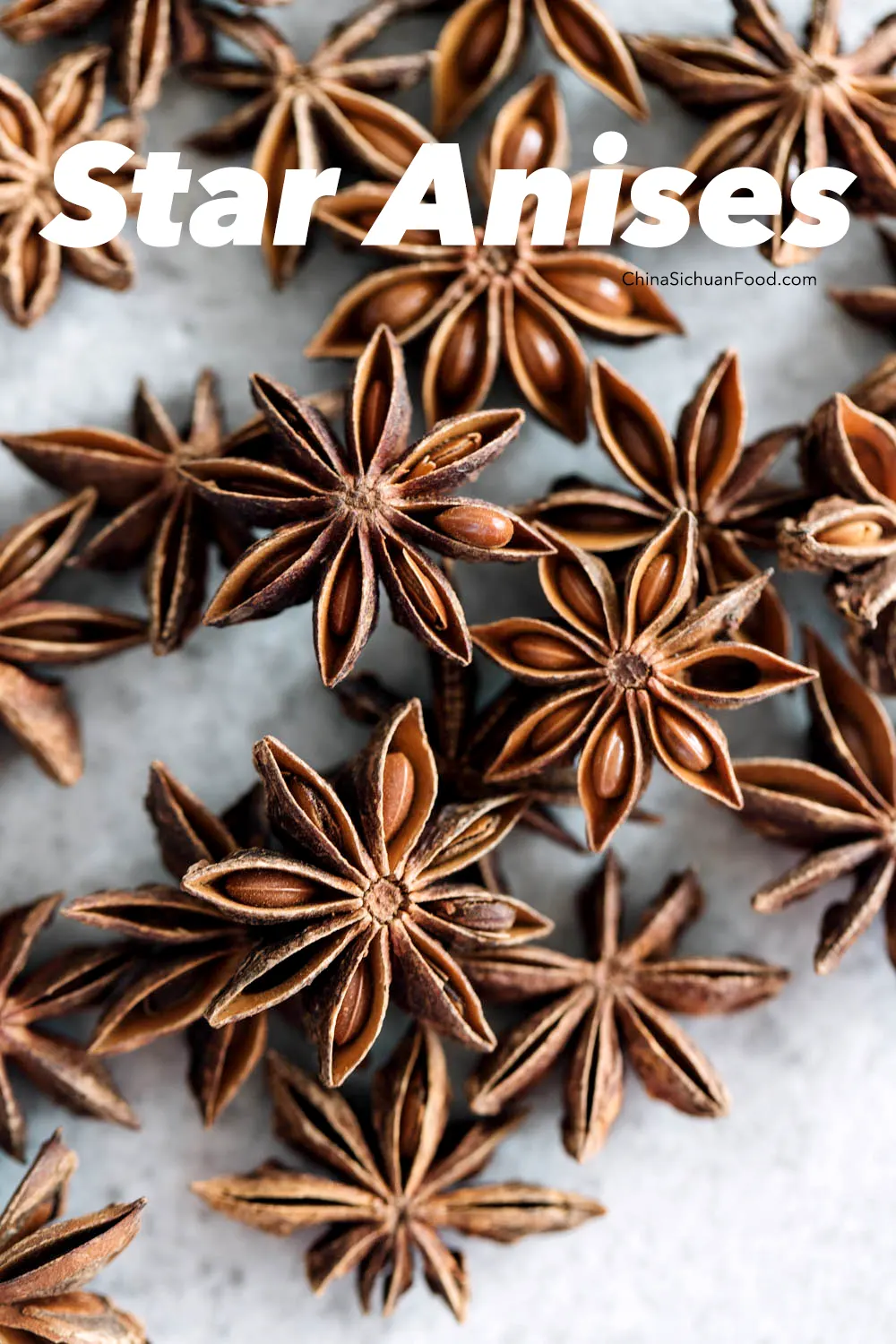
What’s Star Anise
Grown in China and Japan, star anise has very specific anise or licorice flavor. The aromatic spice is used mainly in cooking and in many other applications. As a spice and ingredient, star anise can be found in dishes all over the world, from east to west. It is one of the critical elements in the popular Chinese five-spice blend and can be found in all sorts of recipes, from tea to soups, to alcoholic drinks and baked goods such as cakes and cookies. It is called “大料” in Chinese cooking, indicating that it is one of the most important spices for cooking. Star anise is also the foundation spice for Chinese master stock (卤水).
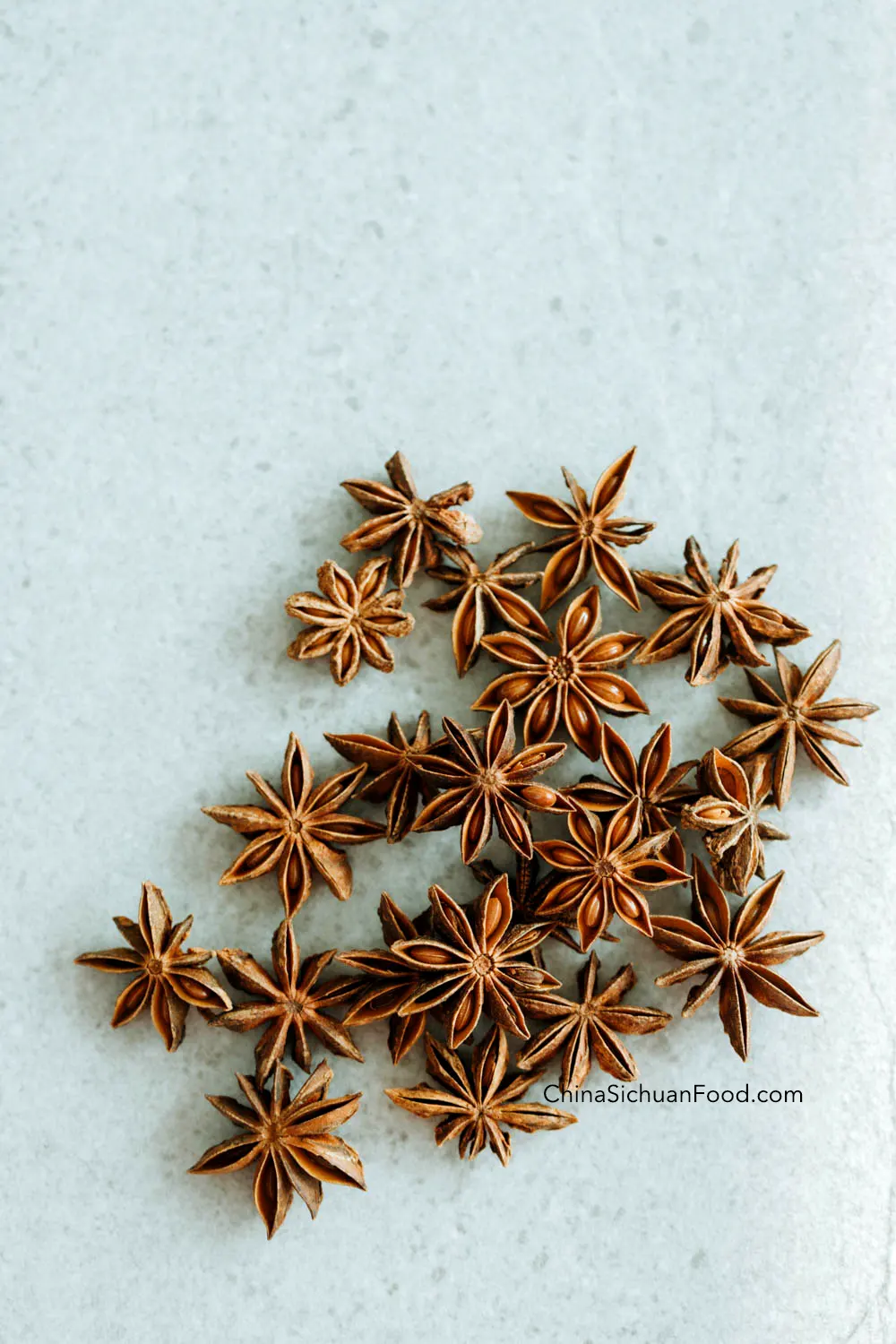
Essential uses for star anise
- Cooking: Star anise is used to make sweet and savory dishes. Its anise flavor profile is similar to that of fennel and licorice. This ingredient is used across the globe and spans from hot chocolate in Mexico to a seasoning used for sausages in Italy. Aniseed is considered digestive and was used in ancient Roman times to end a meal. This fact is likely due to the spice’s ability to aid digestion. In Chinese cooking, it is widely used in braised dishes or as an ingredient for the dry spice mix.
- Liquor: Anise is used to flavor some of the globe’s most popular alcohols, such as Absinthe from France and Sambuca from Italy. Ouzo from Greece is another example.
- Essential oils.
- Traditional medicine.
Interestingly, star anise is part of the same family as carrots, parsley, and celery.
The star anise tree and pods
There is more than one “star anise” plant, and a couple is poisonous, such as the swamp star anise and the Japanese star anise. The tree that bears the culinary star anise is illicium verum. This tree is relatively simple to grow at home but takes a very long time (many years) to bear fruit. When it eventually does, there will be a harvest of fresh star anise pods which are green. Then the pods are sun-dried to get the dried spice version.
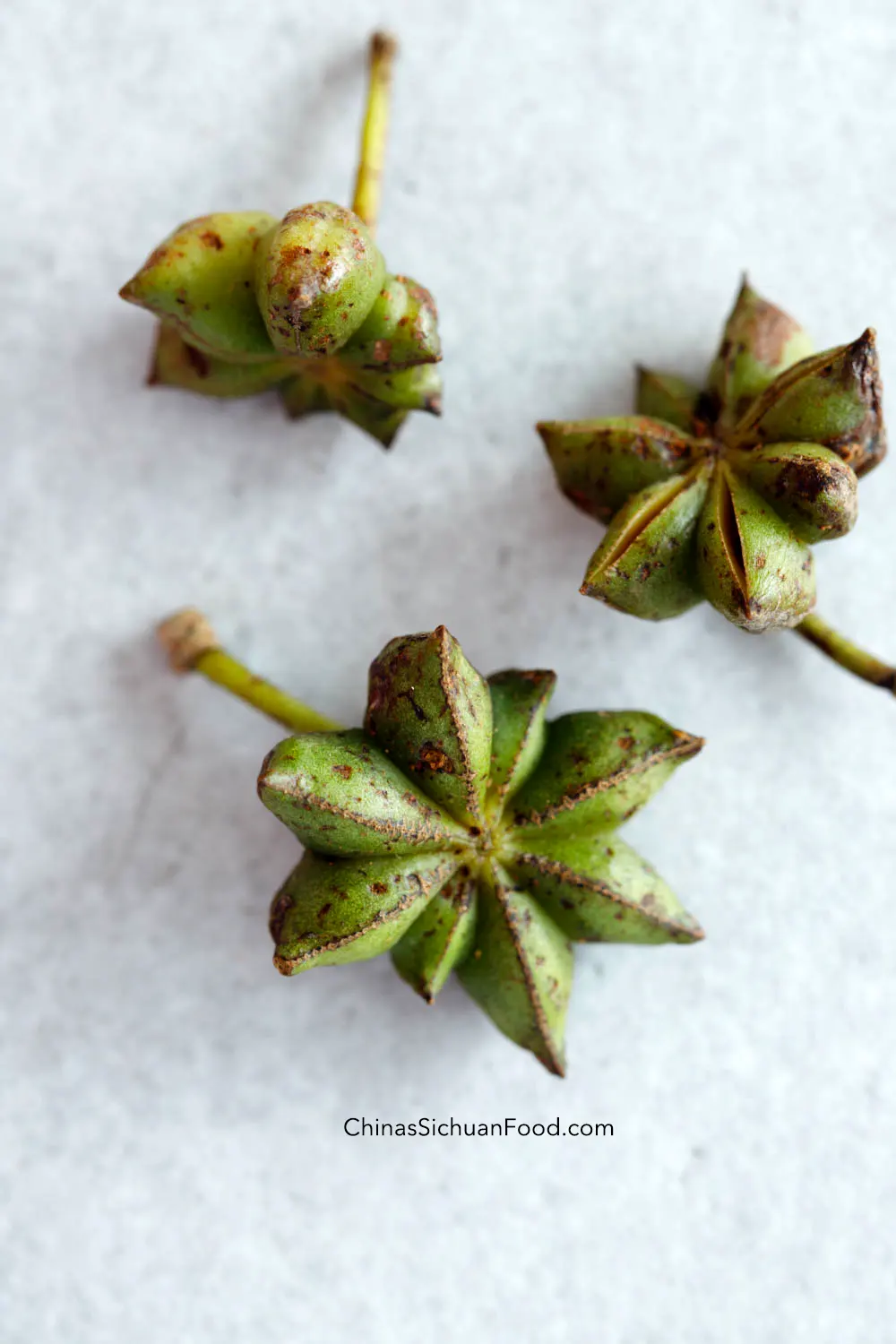
The fresh pods are green, hanging on the tree. When I first see this, I feel really magic because they are so cute, like stars in a green leafy ocean. Then I bought a large bag to home and sun-drying myself. I placed them near the window where the sunlight is enough on the first day and then when I return, I got lots of dark dots on my floor all over the room. I was thinking maybe the wind brings me some gifts. Looking closer, I found out they are the star anise seeds. Those seeds have a naturally shining surface and a dark brown color
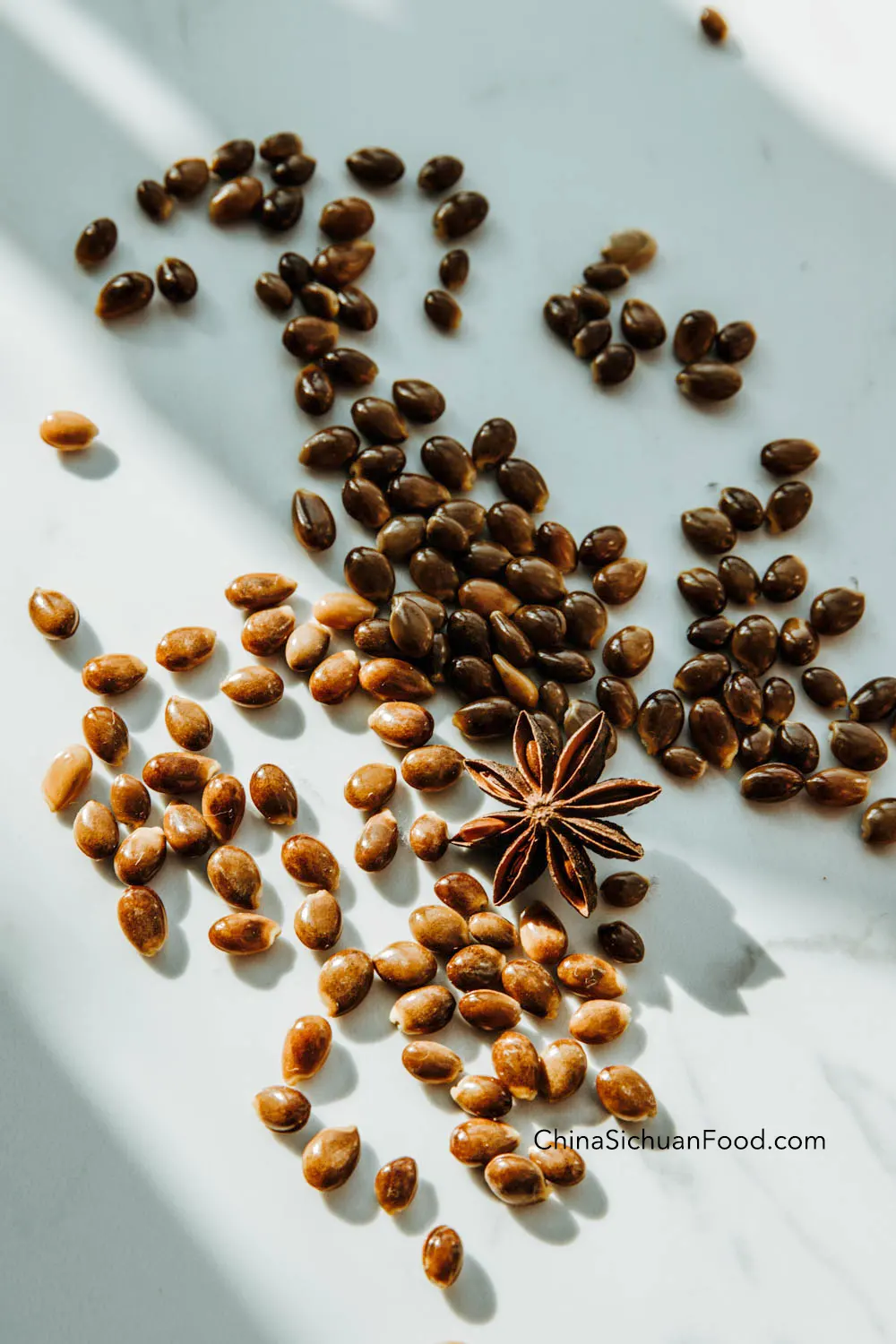
What does star anise taste like?
Star anise tastes very similar to licorice. It has a slightly sweet and spicy flavor with earthy and warm aromatics. The flavor profile of star anise is particularly pungent and distinct. So usually only a small amount is used, otherwise, it will cover the flavors from other spices. It’s not a flavor everyone loves, but people often don’t realize it’s in something they are eating if it is well balanced with the other ingredients in the dish.
Benefits of star anise
As with so many herbs and spices, star anise is a wellspring of health benefits. The wonderful thing about this spice is that it is so versatile, and there are so many opportunities to include it in your diet. From soups and sauces to teas and pastries. Star anise is an excellent source of nutrients such as magnesium, calcium, iron, and vitamins B1, B2, B3, and B6. It also contains vitamin E, making it an effective ingredient in body care. It’s also a great source of selenium and zinc.
Here is a list of the vital benefits linked to star anise:
- This marvelous spice has antiviral capabilities and is used in traditional medicines developed to fight the flu and other human viral infections. It is highly effective for sore throat and general detoxifying.
- Star anise has antibacterial and antifungal properties and is, therefore, able to heal issues such as urinary tract infections.
- Star anise has anti-inflammatory properties.
- To alleviate headaches: this ingredient has been used for years to treat migraines and headaches. This is attributed to its ability to relax and relieve tension.
- Combats depression and anxiety: due to its high vitamin B. Consuming this as a tea is the best way of getting all the excellent vitamin B benefits.
- Helps regulate blood sugar: excellent natural support for diabetes and problematic cholesterol levels in the body.
- Good for digestion: Reduces intestinal infections, bloating, stomach pain, and other inflammatory problems.
- Concentration and focus: said to improve the brain’s vitality and mental clarity. This is based on its high levels of antioxidants and positively impacts sleep.
- Relaxes the muscles: great to relax the mind, muscles, and organs. This ingredient is said to be good for general stress and tension.
- Regulates weight gain.
- Supports breastfeeding in mothers: relieves some of the pain and inflammation associated with breastfeeding.
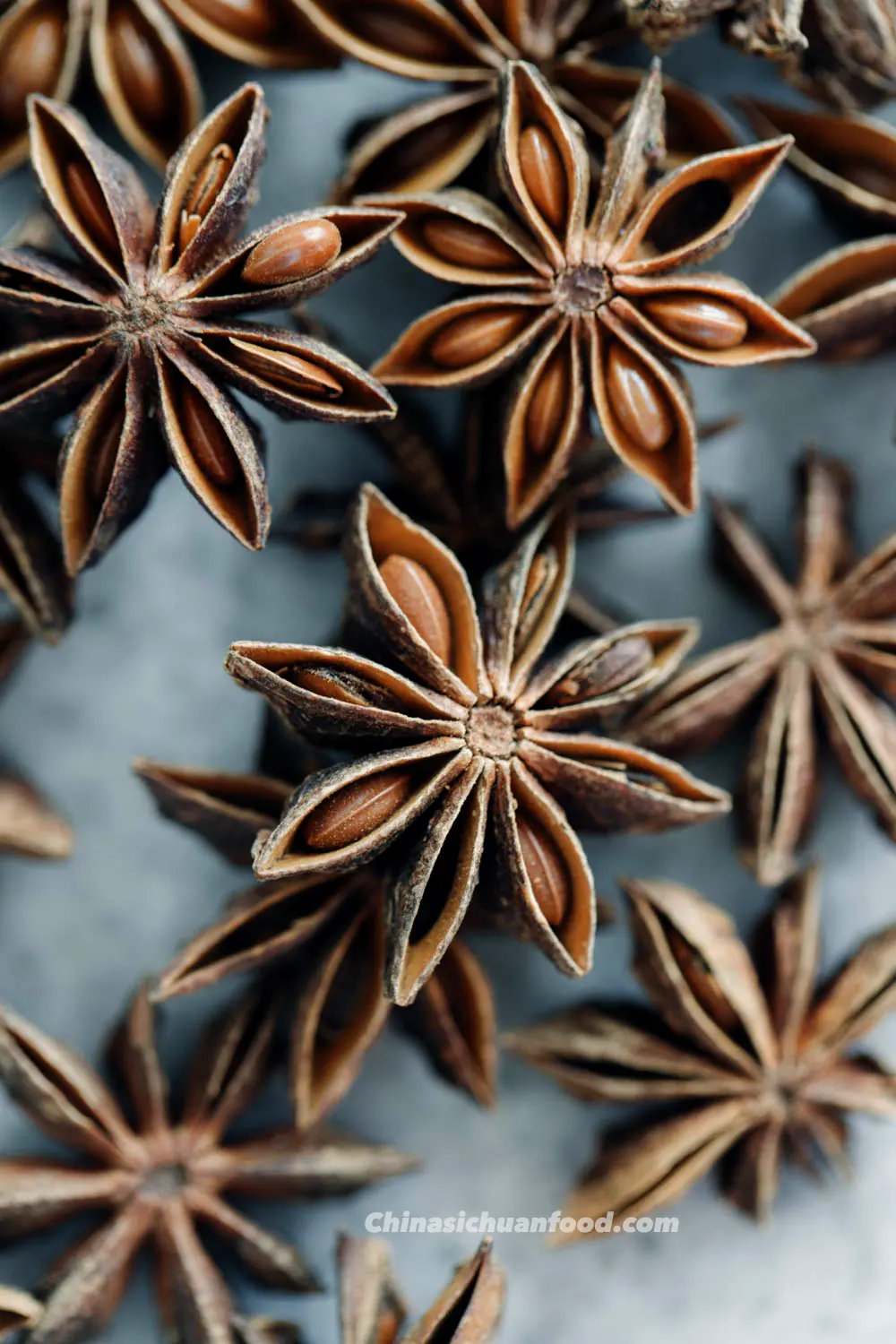
Purchasing tips
Star anise can be purchased in most grocery stores around the world. But in Asian stores, they are packaged as whole ones. Although you may need to break them into small pieces later before using them, I strongly recommend choosing those with a complete star shape. You can also purchase directly from Amazon.
Substitute for star anise
If you are in the middle of whipping up a dish from a recipe containing star anise and realize you don’t have any, here are three alternatives:
- Fennel: Although this tastes pretty different to star anise, it works because they are both aniseeds in flavor. Fennel is much stronger than star anise, so use a conversion ratio of one part fennel to four parts star anise.
- Chinese five-spice: This is by far the number one best substitute for star anise. The other ingredients in this blend include cinnamon, pepper, cloves, and fennel. Use half the quantity of Chinese five-spice to what is stated in the recipe.
- Anise seeds: the third recommended star anise substitute is anise seeds. Use half the amount of anise seeds stated in the star anise recipe.
Star anise has a very particular flavor but it is used all around the world and in multiple applications. This underrated ingredient has the ability to transform your dish into something very special and gives the food that it infuses a wonderful sweetness, aromatic flavor, and a touch of earthiness. Following are some of the basic inspirations.
- Chinese five spice powder
- Hong Shao Rou
- Red-braised pork ribs
- Mei Cai Kou Rou
- Marinated tofu
- Chinese chili oil
- Hot pot broth
- Tea eggs
- Chinese braised chicken
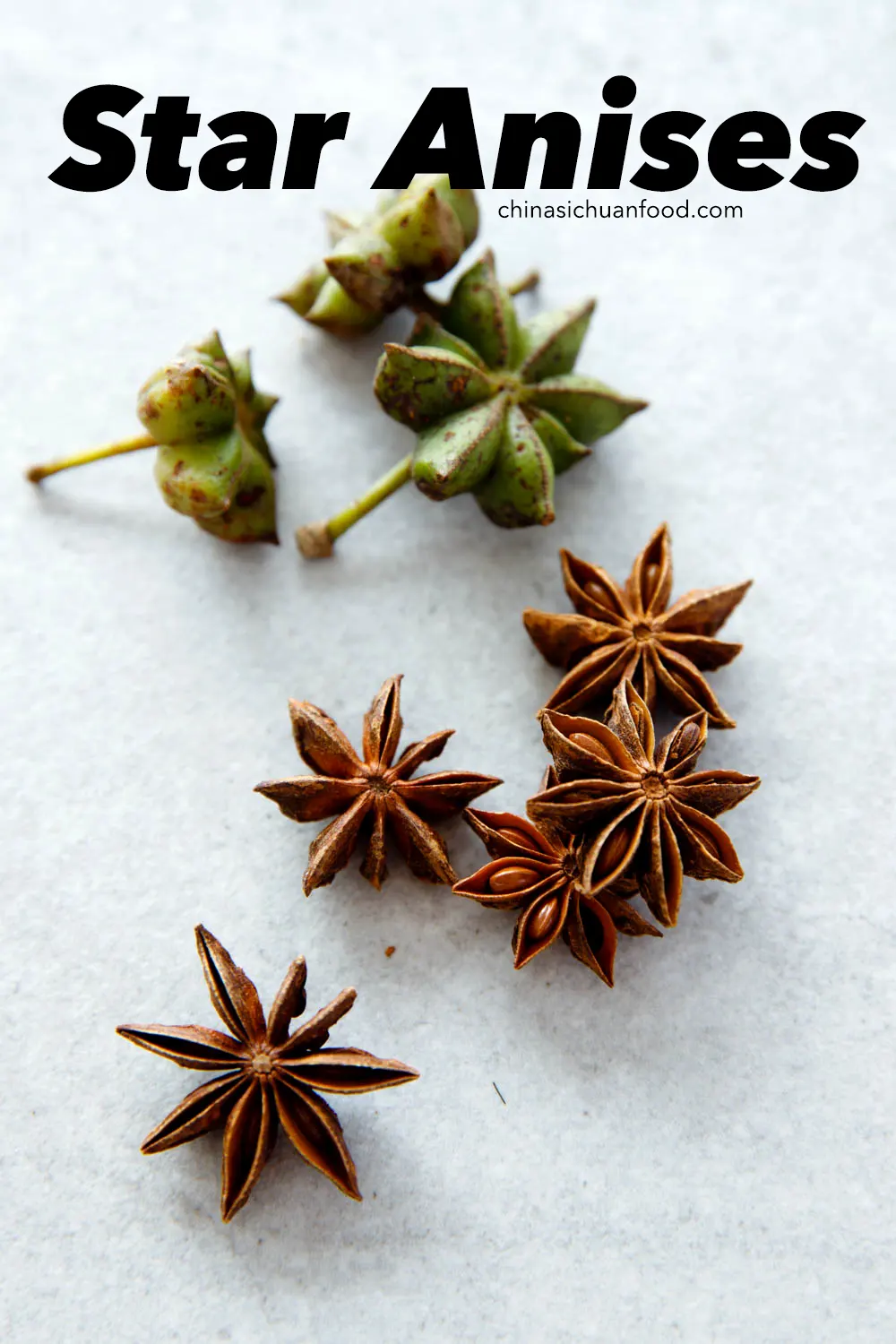

I appreciate the depth of information you provided in your article about star anises, Elaine. It’s fascinating to learn about their role in traditional medicine and their potential benefits for digestion and respiratory health.
Thank you dear!